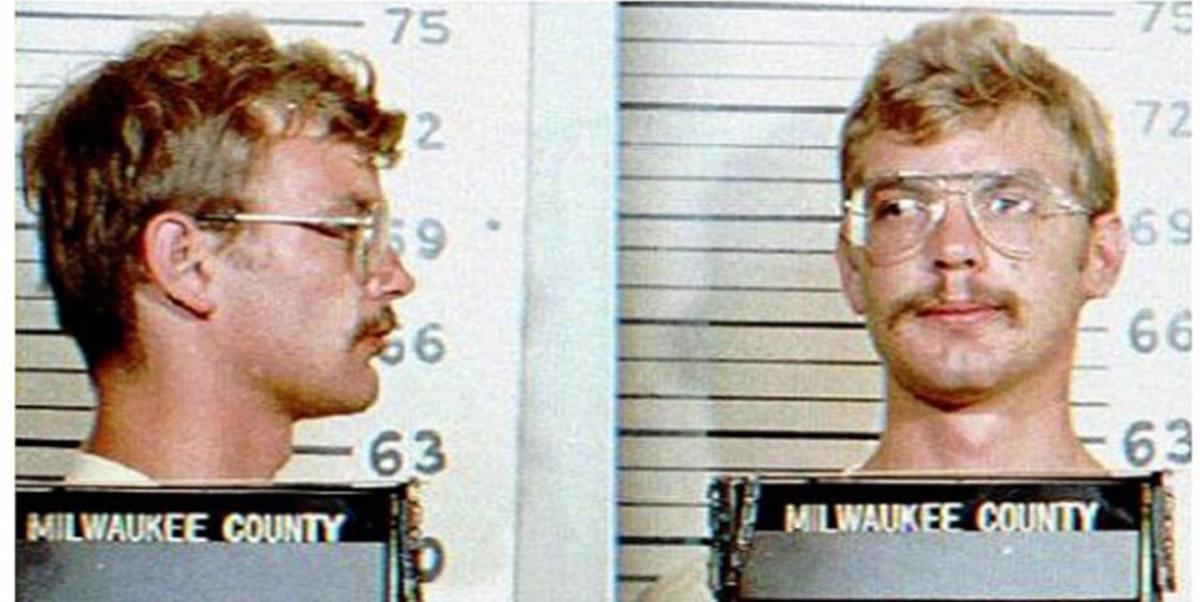The Death Of Jeffrey Dahmer: What Happened & Who Killed Him?
Did justice truly prevail when Jeffrey Dahmer met his end? The demise of Jeffrey Dahmer on November 28, 1994, marked the conclusion of a chapter of horror, but also ignited a complex debate about justice, retribution, and the disturbing details surrounding his death.
Jeffrey Lionel Dahmer, the name synonymous with unspeakable acts, was indeed an American serial killer whose reign of terror spanned from 1978 to 1991. His crimes, encompassing the murders of 17 young men and boys, were further distinguished by acts of necrophilia, cannibalism, and dismemberment, etching his name into the annals of criminal history with unparalleled infamy. While his atrocities cemented his place as one of America's most notorious serial killers, some argue that others, like Ted Bundy (potentially responsible for 35 deaths) and Gerald Stano (linked to as many as 41), claimed a higher number of victims, according to CBS News reports. Nevertheless, the depravity of Dahmer's crimes continues to shock and repulse, fueling an ongoing fascination with his life, his motives, and ultimately, his death.
| Jeffrey Dahmer: Biographical and Professional Information | |
|---|---|
| Full Name | Jeffrey Lionel Dahmer |
| Alias | Milwaukee Cannibal, Milwaukee Monster |
| Date of Birth | May 21, 1960 |
| Place of Birth | Milwaukee, Wisconsin, USA |
| Date of Death | November 28, 1994 |
| Place of Death | Columbia Correctional Institution, Portage, Wisconsin, USA |
| Cause of Death | Murdered by fellow inmate |
| Nationality | American |
| Occupation | Serial Killer |
| Known For | Committing the rape, murder, dismemberment, necrophilia, and cannibalism of 17 men and boys between 1978 and 1991. |
| Conviction | Convicted of 15 murders in 1992. Sentenced to 15 consecutive life sentences, later increased to 16. |
| Prison | Columbia Correctional Institution, Portage, Wisconsin |
| Learn More at Biography.com |
The news of Jeffrey Dahmer's death reverberated across the nation, eliciting a spectrum of reactions. For many, it was a moment of grim satisfaction. As reported by the Wausau Daily Herald through the Associated Press, a passerby in Dahmer's old Milwaukee neighborhood voiced a sentiment that resonated with some: "If you kill anybody like that, you deserve to die like you did." This sentiment, however stark, reflected the deep-seated anger and revulsion felt by those who grappled with the enormity of Dahmer's crimes.
- Aagmaalgives Search Results Related Adult Content 2024
- Vegamovies Alternatives Best Legal Streaming Platforms In 2024
However, the narrative surrounding Dahmer's death extends beyond simple retribution. The details of his demise were almost as unsettling as the crimes he committed. Dahmer's life in prison, a mere two years at the Columbia Correctional Institution in Wisconsin, was a stark contrast to the years of terror he inflicted upon his victims. He was 34 years old when his life was violently cut short. The question of how he died, and why, continues to fascinate and disturb.
According to reports, Jeffrey Dahmer met his end at the hands of Christopher Scarver, a fellow inmate at the Columbia Correctional Facility. The two, along with another inmate named Jesse Anderson, were on cleaning duty in the prison gymnasium on that fateful day, November 28, 1994. While under the supervision of correctional officers, Scarver attacked Dahmer and Anderson, beating them both to death. Both Dahmer and Anderson succumbed to their injuries. Scarver's motive, as he later explained, was rooted in the abhorrence he felt towards Dahmer's crimes, finding them deeply offensive and morally reprehensible.
Scarver detailed the events of that day, explaining how he had come to possess a metal bar, which he used to carry out the attacks. He claimed that Dahmer and Anderson had been taunting him, and that he believed it was his mission to stop Dahmer's evil. The circumstances surrounding the attack raised questions about the level of security within the prison and the supervision of inmates with known violent tendencies. The fact that Scarver was able to carry out the murders while on work detail highlighted potential systemic failures within the correctional facility.
- Candace Owens Exposes The Truth Behind Becoming Brigitte Macron
- Is Hdhub4u Safe Trust Scores Legal Risks Of Movie Downloads
The death of Jeffrey Dahmer, while seen by some as a form of justice, did not erase the pain and suffering he inflicted upon his victims and their families. His heinous acts, which included necrophilia and cannibalism, left an indelible scar on the collective psyche. The sheer brutality of his crimes ensured that he would be remembered as one of the most depraved serial killers in history. The gruesome nature of his murders, the dismemberment of bodies, and the cannibalistic acts, have all contributed to the enduring fascination and revulsion surrounding his name.
Lionel Herbert Dahmer, Jeffrey's father, grappled with the weight of his son's crimes. The elder Dahmer, a research chemist, authored a book titled "A Father's Story," in which he attempted to understand the factors that led his son down such a dark path. The book offered a glimpse into Jeffrey's childhood and upbringing, but ultimately failed to provide a definitive explanation for his monstrous behavior. The question of nature versus nurture, and the extent to which Dahmer's environment contributed to his crimes, continues to be debated.
The renewed interest in the Jeffrey Dahmer story, fueled in part by documentaries and fictionalized portrayals, has sparked conversations about the ethics of sensationalizing true crime stories. While these productions can provide insights into the psychology of serial killers and the impact of their crimes on victims and their families, they also run the risk of glorifying violence and exploiting the suffering of others. The question of how to responsibly tell these stories, without further traumatizing victims and their families, remains a complex and challenging one.
Jeffrey Dahmer was sentenced to multiple life sentences, totaling over 900 years, for his crimes. He was incarcerated in a high-security prison, intended to ensure that he would never again pose a threat to society. His incarceration at the Columbia Correctional Institution was meant to be a permanent separation from the world he had so brutally violated. However, the events of November 28, 1994, demonstrated that even within the confines of a maximum-security prison, violence and death could still find their way to him.
The circumstances surrounding Dahmer's death continue to be a source of morbid fascination. The fact that he was beaten to death while performing cleaning duty in a bathroom, a seemingly mundane task, adds a layer of unsettling irony to his demise. The image of the notorious serial killer meeting his end in such an ordinary setting is a jarring contrast to the extraordinary depravity of his crimes.
Dahmer's case also raises questions about the role of religion and redemption. Despite his horrific acts, some individuals, including a pastor who ministered to him in prison, saw him as a forgiven sinner. This perspective, while controversial, highlights the complexities of faith and forgiveness, even in the face of unimaginable evil. Dahmer himself expressed a sense of remorse, stating, "In fact, I think I should have been put to death by the state for what I did."
Jeffrey Dahmer's victims, including Anthony Hughes and Konerak Sinthasomphone, are more than just names on a list. They were individuals with lives, dreams, and families whose lives were irrevocably shattered by Dahmer's actions. Their stories, often overshadowed by the sensationalism surrounding Dahmer himself, deserve to be remembered and honored. It is crucial to acknowledge the devastating impact of his crimes on the victims and their loved ones, ensuring that their suffering is never forgotten.
The legacy of Jeffrey Dahmer is one of horror, loss, and the enduring capacity for evil. His crimes serve as a stark reminder of the depths of human depravity and the importance of vigilance in protecting the vulnerable. While his death brought a measure of closure for some, it did not erase the pain and suffering he caused. The Jeffrey Dahmer story remains a cautionary tale, a chilling reminder of the darkness that can lurk within the human heart.
In conclusion, the date of death of Jeffrey Dahmer, November 28, 1994, marks not just the end of a life, but the closure of a horrific chapter in American criminal history. The circumstances surrounding his death, the motivations of his killer, and the reactions of the public all contribute to the enduring fascination with this case. While his name will forever be associated with unimaginable evil, it is important to remember the victims and their families, and to learn from the lessons of this tragic chapter in our history.
The world knew Jeffrey Dahmer as a hardened killer, responsible for the deaths of seventeen young men and boys. His acts were unspeakable, encompassing necrophilia, cannibalism, and the systematic dismemberment of his victims. Yet, even this monster met his own brutal end within the confines of a prison cell.
Dahmer's gruesome exploits shocked the world when they came to light in 1991. The details were horrifying, and the scale of his depravity was almost incomprehensible. He lured his victims, often from vulnerable communities, back to his apartment where he drugged, murdered, and then subjected them to unimaginable acts. The discovery of his "trophies" skulls, bones, and Polaroid photographs documenting his crimes turned the stomach of even seasoned investigators.
Christopher Scarver, the man who ended Dahmer's life, claimed that he was driven to kill by the nature of Dahmer's crimes. Scarver, who was serving time for a previous murder, stated that he was repulsed by Dahmer's actions and believed that he had to stop him. He saw Dahmer as a symbol of evil, and his act of violence as a form of purification.
Jeffrey Dahmer was convicted of 15 murders in 1992 and sentenced to 15 consecutive life sentences. The public largely believed that this was a just punishment for his heinous crimes. However, some felt that the death penalty would have been more appropriate, given the gravity of his actions.
The Jeffrey Dahmer story continues to fascinate and disturb. It raises profound questions about the nature of evil, the capacity for human depravity, and the search for justice in the face of unimaginable horror. His crimes remain a chilling reminder of the darkness that can lurk within the human soul.
- Allison Ford From Coyote Ugly To Grand Theft Auto Beyond
- Shea Joelle James The Untold Story Of Kevin James Daughter

How Did Jeffrey Dahmer Die? Explaining Dahmer's Death and Last Days in

Jeffrey Dahmer True Story How He Was Caught, How He Died and More Parade

Inmate who murdered serial killer Jeffrey Dahmer explains why he did it